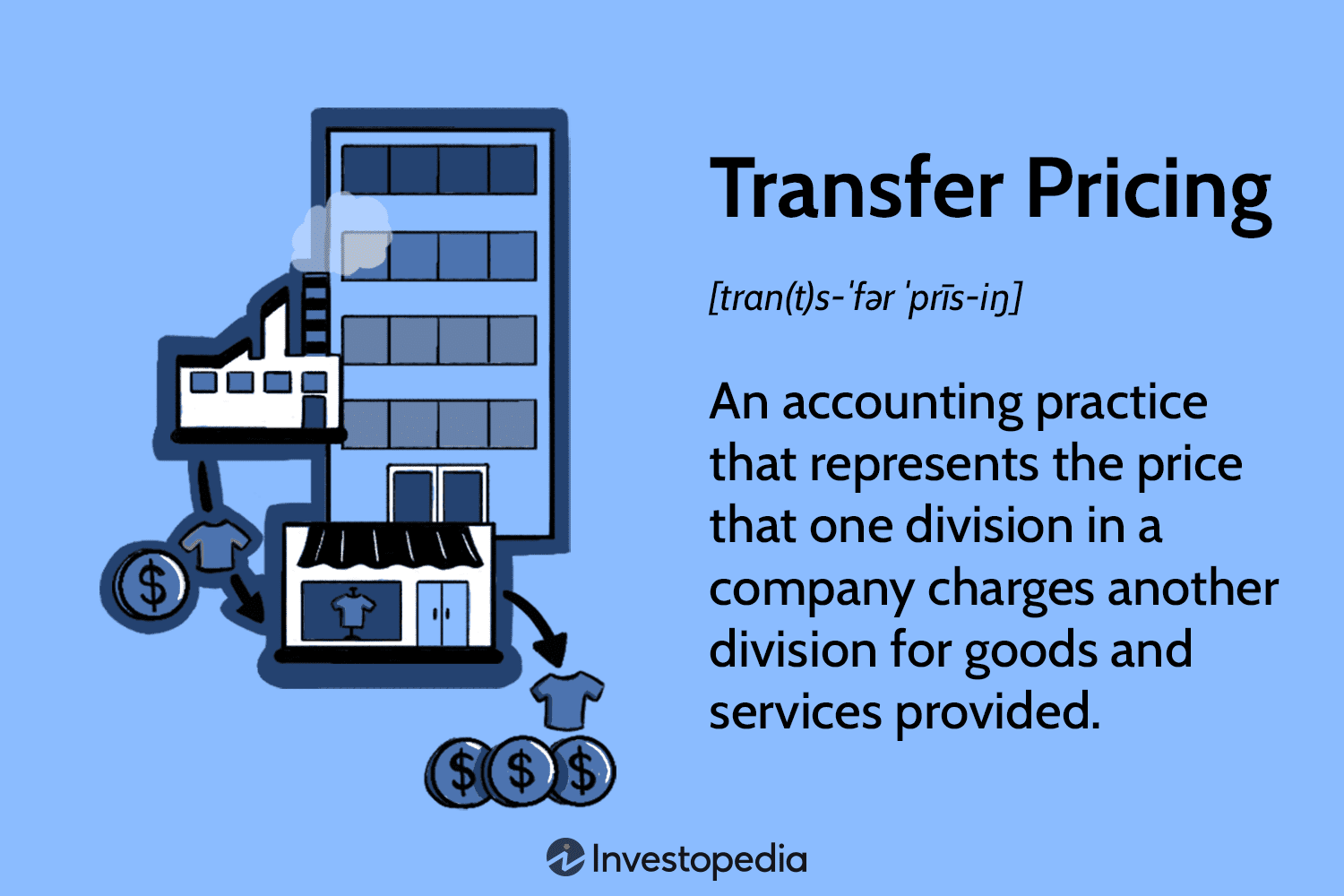Main Points
- Problems with the supply chain can have a big impact on tax planning, leading to higher costs and more difficulty in compliance.
- Strategic planning in supply chain management can help improve tax efficiency and reduce liabilities.
- Global sourcing needs careful thought about tax implications due to different tax rates in different jurisdictions.
- Transfer pricing is key to reducing tax audits and penalties, and making sure you comply with international regulations.
- Putting sustainable inventory practices in place can offer tax benefits and improve how well your operations run.
Why the Supply Chain and Tax Planning are Important
It’s important for businesses to understand the relationship between supply chain management and tax planning. Supply chains are the lifeblood of companies, deciding how goods and services are produced, transported, and delivered. At the same time, tax planning makes sure that businesses comply with tax laws and pay as little tax as possible.

How Supply Chain Interruptions Impact Tax Planning
When supply chains are disrupted, it can create a domino effect on tax planning. Disruptions to supply chains can lead to unexpected costs, delays, and regulatory challenges for businesses. These disruptions can be caused by a variety of factors, including natural disasters, geopolitical tensions, and global pandemics. When these events happen, companies must be agile and adapt quickly to avoid major financial losses.
For example, a company that depends on one supplier might have to find other places to get materials if their main supplier is interrupted. This could cause the cost of shipping to go up and there could be tax problems because of different tax rates in the new places.
Enhancing Tax Efficiency through Strategic Planning
Effective strategic planning in supply chain management can help businesses to navigate tax challenges. By optimizing supply chain operations, companies can enhance their tax efficiency, reducing liabilities and improving profitability. This involves making informed decisions about where to locate operations, how to manage transfer pricing, and implementing sustainable inventory practices.
When supply chain problems arise, businesses can use them as a chance to enhance their operations. A business that reassesses its supply chain plan due to an interruption might uncover methods of operation that are more tax-effective. This can result in cost reductions and a more robust competitive market position.
Main Tax Hurdles in Supply Chain Administration
Running a worldwide supply chain includes steering through numerous tax hurdles. These hurdles can influence a business’s total tax obligations and operational productivity. Thus, comprehending these hurdles is crucial for successful tax planning.
The Effect of International Sourcing
International sourcing gives businesses the opportunity to reach a broader range of suppliers and materials, often at a cheaper price. But, it also comes with complicated tax issues. Different countries have different tax rates and rules, which can impact a company’s tax responsibilities. So, companies need to thoroughly examine the tax implications of sourcing materials from different places.
Take XYZ Corporation as an example. They ran into problems with tax implications in their supply chain because of decentralized operations. They consolidated operations in tax-friendly jurisdictions, which improved tax efficiencies and boosted profitability.
Here are some strategies businesses can use to handle these challenges:
- Conduct thorough research on tax rates and regulations in potential sourcing locations.
- Evaluate the benefits and drawbacks of centralized versus decentralized operations.
- Consider consulting with tax advisors to develop a comprehensive tax strategy.
Choosing Tax-Friendly Jurisdictions
Choosing the right jurisdiction for your operations can significantly impact your tax liabilities. Different regions offer various tax incentives, and selecting a tax-friendly jurisdiction can lead to substantial savings. The key is to analyze the tax environment of potential locations thoroughly before making a decision.
It’s important to think about elements like corporate tax rates, the tax credits available, and how stable the local tax laws are. For example, some countries provide businesses that contribute to local employment or invest in sustainable practices with lower tax rates. Businesses can enjoy lower tax burdens and increased profitability by relocating certain operations to these jurisdictions.
Successful Strategies for Transfer Pricing
Transfer pricing is the process of determining the prices for transactions between related business entities, like subsidiaries of a multinational corporation. It’s critical to manage transfer pricing effectively to make sure you’re following international tax regulations and to lessen the chance of audits and penalties.
Companies can create successful transfer pricing strategies by setting distinct pricing policies that mirror the current market. They should also document these policies in detail. By frequently reviewing and modifying transfer pricing strategies to accommodate shifts in the business landscape, they can ensure compliance and maximize tax efficiency.
Green Inventory Strategies
By adopting green inventory strategies, businesses can enjoy tax benefits and increase operational efficiency. There are many jurisdictions that offer tax incentives to companies that adopt eco-friendly practices like using renewable energy sources or reducing waste.
For instance, a business that invests in equipment that conserves energy or establishes a recycling program might be eligible for tax credits or deductions. Companies can reduce their tax liabilities and make a positive impact on the environment, while also improving their supply chain operations, by adopting sustainable practices.
Approaches for Tax-Optimized Supply Chain Planning
For businesses to realize tax optimization in supply chain planning, they need to implement approaches that align their operational objectives with tax planning goals. This requires scrutinizing different elements of the supply chain and making knowledgeable decisions that boost tax optimization.
Centralised vs. Decentralised Operations
The decision to centralise or decentralise operations can have a major impact on taxation. Centralising operations in one location can make tax compliance easier and lower administrative costs. On the other hand, decentralising operations across several jurisdictions can provide access to local tax benefits and decrease exposure to particular regional risks.
Companies must take into account the cost of compliance, potential tax savings, and the overall impact on operational efficiency when considering these options. By evaluating the advantages and disadvantages of each approach, businesses can devise a plan that optimizes both tax efficiency and business performance. For more insights, consider exploring strategies for tax-efficient supply chain planning.
Using Technology to Improve Tax Efficiency
Technology is a crucial tool for improving tax efficiency in the supply chain. Businesses that use advanced supply chain management tools can better understand their operations and find ways to save on taxes.
For example, data analytics can enable businesses to keep an eye on inventory levels, keep track of how their supply chains are doing, and make their logistics as efficient as possible. The information they gain from this can help them make strategic choices that lower their tax bills and make their operations more efficient. Furthermore, technology can make the process of complying with tax regulations smoother, which lowers the chances of making mistakes and being audited.
Investigating Tax Breaks and Deductions
Several government bodies provide tax breaks and deductions to motivate companies to invest in certain activities, like research and development or eco-friendly practices. By investigating these options, businesses can lower their tax obligations and improve their competitive stance.
Businesses can capitalize on tax incentives by doing their due diligence on what programs are available and determining if they are eligible. It can also be beneficial to consult with a tax advisor to gain insight into how to get the most out of these incentives. By incorporating tax incentives into their supply chain strategy, businesses can realize substantial cost savings and promote sustained growth.
Preparing Your Business for the Future
With the world changing at a rapid pace, businesses must take a proactive approach to future-proof their operations. This means staying ahead of regulatory changes, adapting to new market conditions, and continuously evaluating and tweaking their strategies to ensure they’re as tax efficient as possible.
Getting Ready for Regulatory Shifts
Regulatory shifts can greatly affect supply chain functions and tax planning. By keeping up-to-date on possible shifts and what they mean, companies can create plans to reduce risks and take advantage of new possibilities.
Getting involved with trade organizations, going to conferences, and seeking advice from legal and tax professionals can offer important information about new regulations. By getting ready for changes in regulations ahead of time, companies can make sure they are in compliance and stay competitive. For more insights, consider exploring business tax planning tips and strategies that can aid in navigating regulatory changes effectively.
Constant Review and Modification
For businesses to keep their taxes efficient, they need to constantly review and modify their supply chain strategies. This means they have to regularly look at their operations, understand the tax implications, and make decisions that will optimize their performance.
Companies that take a proactive approach to managing their supply chains can spot potential risks and opportunities early. This allows them to react effectively to changes in conditions. This ongoing process of evaluation and adjustment is crucial for long-term success in a fast-paced global marketplace.
Integrating Tax Planning into Business Expansion
Integrating tax planning into business expansion is crucial for maximizing profits and ensuring sustainable growth. As businesses grow, their tax obligations become more complicated, necessitating strategic planning for effective management. By incorporating tax considerations into their expansion plans, companies can reduce liabilities and strengthen their competitive standing.
Companies need to carry out frequent evaluations of their operations and the tax implications to ensure their tax strategy is in line with their business growth. This involves examining their current tax liabilities, looking for chances to save on taxes, and making knowledgeable decisions to enhance performance. By taking a proactive approach, businesses can handle the intricacies of tax planning and attain steady growth.
FAQ
Supply chain and tax planning can be confusing, with many intricate details to consider. In this section, we answer some frequently asked questions to help you understand these complexities and improve your financial strategies.
What impact do supply chain disruptions have on tax planning?
When supply chains are disrupted, it can lead to unforeseen expenses, delays, and regulatory hurdles, all of which can have an effect on tax planning. For instance, if a disruption forces a business to source materials from a different location, it may lead to higher shipping costs and differing tax rates. To lessen these impacts, companies should create backup plans and routinely assess their supply chain strategies to maintain tax efficiency.
Understanding Transfer Pricing and its Tax Implications
Transfer pricing is the practice of determining the cost of transactions between related business entities, such as subsidiaries of a multinational corporation. Properly managing transfer pricing is essential to ensure compliance with international tax laws and reduce the risk of audits and penalties. By creating transparent pricing policies and documenting them thoroughly, businesses can maximize tax efficiency and maintain compliance. For more insights, explore these business tax planning tips.
How does inventory management contribute to tax efficiency?
Inventory management is crucial for tax efficiency as it has a direct impact on a company’s cost of goods sold and total tax liabilities. Good inventory practices can result in tax deductions and credits, waste reduction, and better operational efficiency. By adopting sustainable inventory solutions, companies can realise substantial tax savings and improve their competitive edge.
How do I pick the best location for my business to save on taxes?
Picking the best location for your business to save on taxes means looking at several things. You need to consider the corporate tax rates, any tax credits that are available, and how stable the tax laws are. Businesses should do their homework and talk to tax advisors to find the places that offer the best tax environment. By picking the right location, businesses can pay less in taxes and make more money.
How can you manage transfer pricing effectively?
To manage transfer pricing effectively, you need to set up transparent pricing policies that are in line with the market and document these policies in detail. Regularly reviewing and adjusting your transfer pricing strategies to keep up with changes in the business environment can also help you stay compliant and optimize your tax efficiency.
What role does technology play in improving tax planning for businesses?
The use of technology is key to increasing tax efficiency in the supply chain. Businesses can use advanced supply chain management tools to gain a deeper understanding of their operations and find ways to save on taxes. Data analytics can help businesses keep track of inventory levels, keep an eye on supply chain performance, and make logistics more efficient. This can lead to lower tax liabilities and increased operational efficiency.
- Use data analytics to monitor and improve supply chain operations.
- Adopt automated tax compliance systems to minimize mistakes and audits.
- Put money into technology that improves inventory management and logistics.
What incentives are there for sustainable supply chain practices?
Many governments provide tax incentives and credits to motivate businesses to adopt sustainable practices, such as utilizing renewable energy sources or reducing waste. By taking advantage of these opportunities, companies can decrease their tax liabilities and enhance their competitive position. Carrying out comprehensive research on available programs and consulting with tax advisors can assist businesses in maximizing the benefits of these incentives.
What can I do to keep up with regulatory changes that affect supply chain and tax planning?
Businesses can keep up with regulatory changes by getting involved with industry associations, going to conferences, and seeking advice from legal and tax professionals. Keeping up-to-date with potential changes and what they could mean allows companies to come up with strategies to reduce risk and take advantage of new opportunities. Planning for regulatory changes ahead of time helps to ensure that a business is compliant and stays competitive in the marketplace.
To sum up, it’s crucial for businesses to have effective supply chain and tax planning to navigate complex regulatory environments and achieve sustainable growth. By adopting strategic approaches, leveraging technology, and exploring tax incentives, companies can enhance their financial strategies and drive long-term success.


